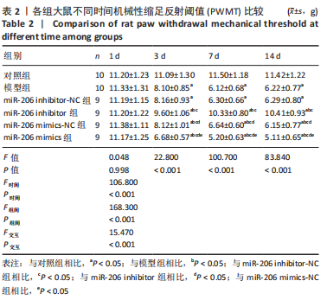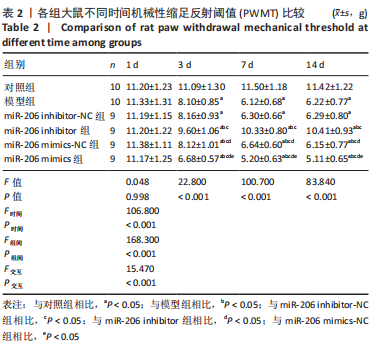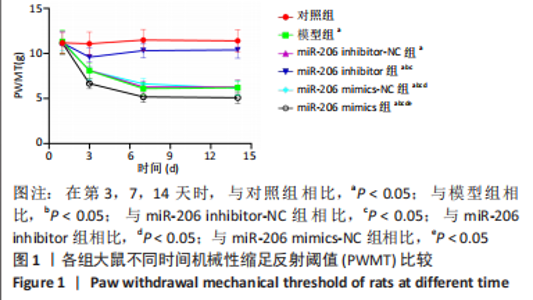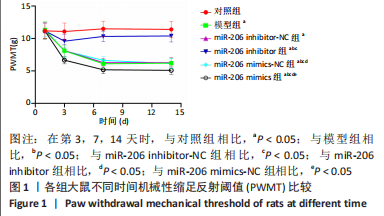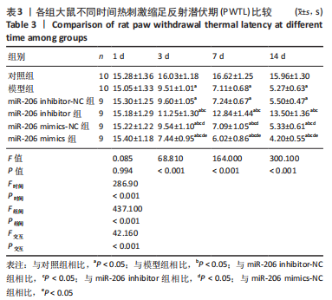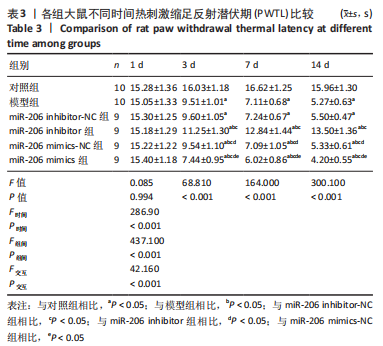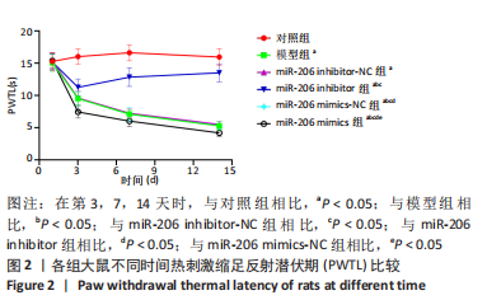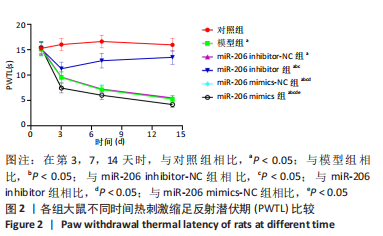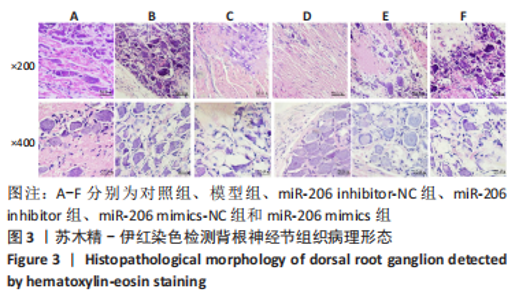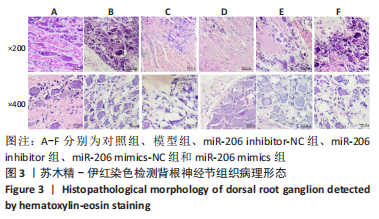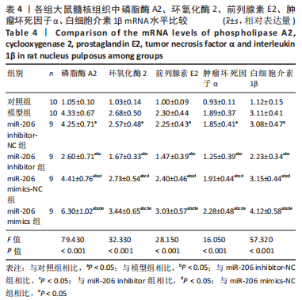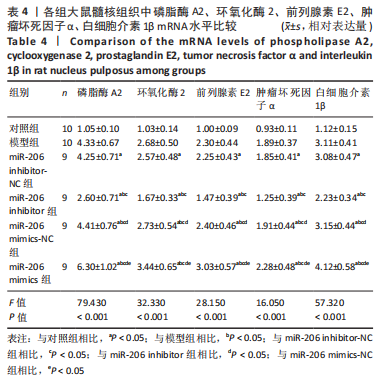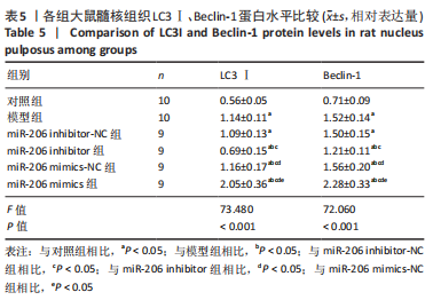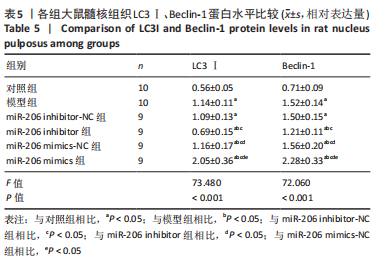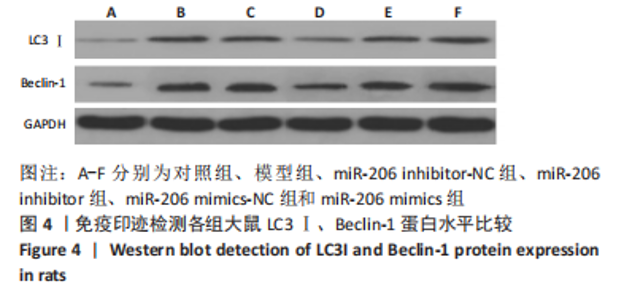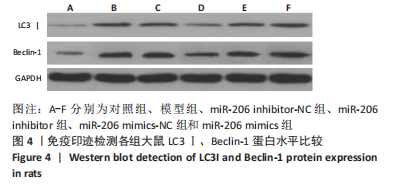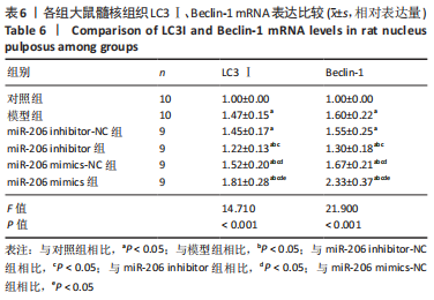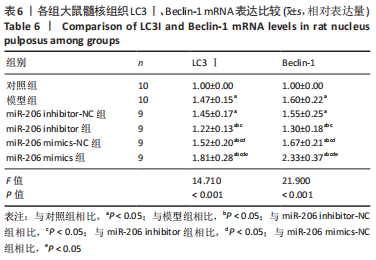[1] WANG L, LI C, WANG L, et al. Sciatica-Related Spinal Imbalance in Lumbar Disc Herniation Patients: Radiological Characteristics and Recovery Following Endoscopic Discectomy. J Pain Res. 2022;15:13-22.
[2] BENSLER S, WALDE M,ISCHER M, et al. Comparison of treatment outcomes in lumbar disc herniation patients treated with epidural steroid injections: interlaminar versus transforaminal approach.Acta Radiol. 2020;61(3):361-369.
[3] 王裕祥, 杨应忠, 秦卫春,等. 舒筋祛痹汤对腰椎间盘突出症大鼠PLA2活性、IL-6、TNF-α水平和椎间盘退变的影响[J]. 颈腰痛杂志, 2018,39(5):543-546.
[4] 牛辉, 鲍朝辉, 张文明, 等.基于c-JNK/CXCL1信号通路研究椎间盘丸对腰椎间盘突出症大鼠脊髓炎症的抑制作用[J]. 中药新药与临床药理,2021,32(5):655-660.
[5] 吴卉乔. Nampt酶活性抑制剂APO866介导细胞自噬调控椎间盘退变的作用及机制研究[D].上海:中国人民解放军海军军医大学, 2018.
[6] SHEN XF, LI YW, LIANG GQ. Anti-inflammatory Effect of Wumen Zhike Gancao Decoction on Rats with Lumbar Disc Herniation Associated with Lipid Metabolic Disorder. Medicinal Plant. 2019;10(4):10.
[7] 温佩彤. 电针结合有氧运动调控大鼠增龄性骨骼肌萎缩IGF--I/Akt通路的机制研究[D].上海:上海中医药大学,2017.
[8] 师振予,郭亦杰,曾嵘,等.腰椎间盘突出症大鼠模型的建立及病理动态研究[J].湖南中医药大学学报,2020,40(1):28-33.
[9] 茹靖涛,李鸣,苏松雪,等.蛛网膜下隙注射miR-30b对脊髓Nav1.3表达及神经病理性疼痛的影响[J].郑州大学学报(医学版), 2018,53(5):580-584.
[10] FRANÇA FJR, CALLEGARI B, RAMOS LAV, et al. Motor Control Training Compared With Transcutaneous Electrical Nerve Stimulation in Patients With Disc Herniation With Associated Radiculopathy: A Randomized Controlled Trial. Am J Phys Med Rehabil. 2019;98(3):207-214.
[11] 梁雪纯.独活寄生汤辅助常规西医治疗腰椎间盘突出对患者生活质量及相关评分的影响[J].内蒙古中医药,2022,41(7):20-23.
[12] 黄秋阳,王伟,罗书,等.PM_(2.5)通过TLR4破坏自噬流加重Raw264.7巨噬细胞炎症反应[J].天津医药,2022,50(11):1139-1145.
[13] FISHER L.Retraction: miR-206 reduced the malignancy of hepatocellular carcinoma cells in vitro by inhibiting MET and CTNNB1 gene expressions. RSC Adv. 2021;11(8):4439.
[14] 徐晓婷.血浆中肌肉组织特异性微小RNA与机械通气患者膈肌功能的相关性研究[D].南京:东南大学,2018.
[15] 邵海龙,穆佐洲.机体炎症水平和氧化应激水平与腰椎间盘突出症椎间孔镜术后残留疼痛相关性研究[J].陕西医学杂志,2022, 51(10):1274-1277+1281.
[16] MYTIDOU C, KOUTSOULIDOU A, ZACHARIOU M, et al. Age-Related Exosomal and Endogenous Expression Patterns of miR-1, miR-133a, miR-133b, and miR-206 in Skeletal Muscles. Front Physiol. 2021;12: 708278.
[17] 张英, 张渝俊, 綦欣竹,等. 慢性疼痛患者治疗前后血浆miR-206表达差异的临床研究[J].中国疼痛医学杂志,2016,22(5):349-353.
[18] 袁洪波,陈辉根,孟佩盈,等.桥本甲状腺炎患者血清miR-206表达及与免疫平衡的关系[J].中国卫生检验杂志,2021,31(20):2477-2481.
[19] VAN DIJK B, POTIER E, VAN DIJK M, et al.Reduced tonicitystimulates an inflammatory response in nucleus pulposus tissuethat can be limited by a COX-2-specific inhibitor. J Orthop Res. 2015;33(11):1724-1731.
[20] GORTH DJ, SHAPIRO IM, RISBUD MV. Transgenic mice overexpressinghuman TNF-α experience early onset spontaneous intervertebraldisc herniation in the absence of overt degeneration.Cell Death Dis. 2018;10(1):7.
[21] KHAN MI,HARIPRASAD G.Human secretary phospholipase A2mutations and their clinical implications. J Inflamm Res. 2020;13:551-561.
[22] 段小冬. miR-206调控LPS介导胶质细胞炎症反应的机制研究[D]. 武汉:华中农业大学,2015.
[23] 赵小艳. 推拿对椎间盘退变白兔TGF-β1与炎性、自噬相关因子影响的研究[D].成都:成都中医药大学,2020.
[24] OHSHIMA H, URBAN JP. The effect of lactate and pH on proteoglycan and protein synthesis rates in the intervertebral disc. Spine. 1992;17(9): 1079-1082.
[25] 张广智. BRD4通过调控AMPK/mTOR/ULK1通路诱导自噬延缓人源髓核细胞衰老和凋亡[D].兰州:兰州大学,2021.
[26] 禹文峰. CircRNA4736通过“海绵状”吸附miR-206调控Seipin介导的线粒体自噬在缺血性脑卒中再灌注损伤的分子机制[J]. 中国药理学与毒理学杂志,2019,33(6):409-410.
|
